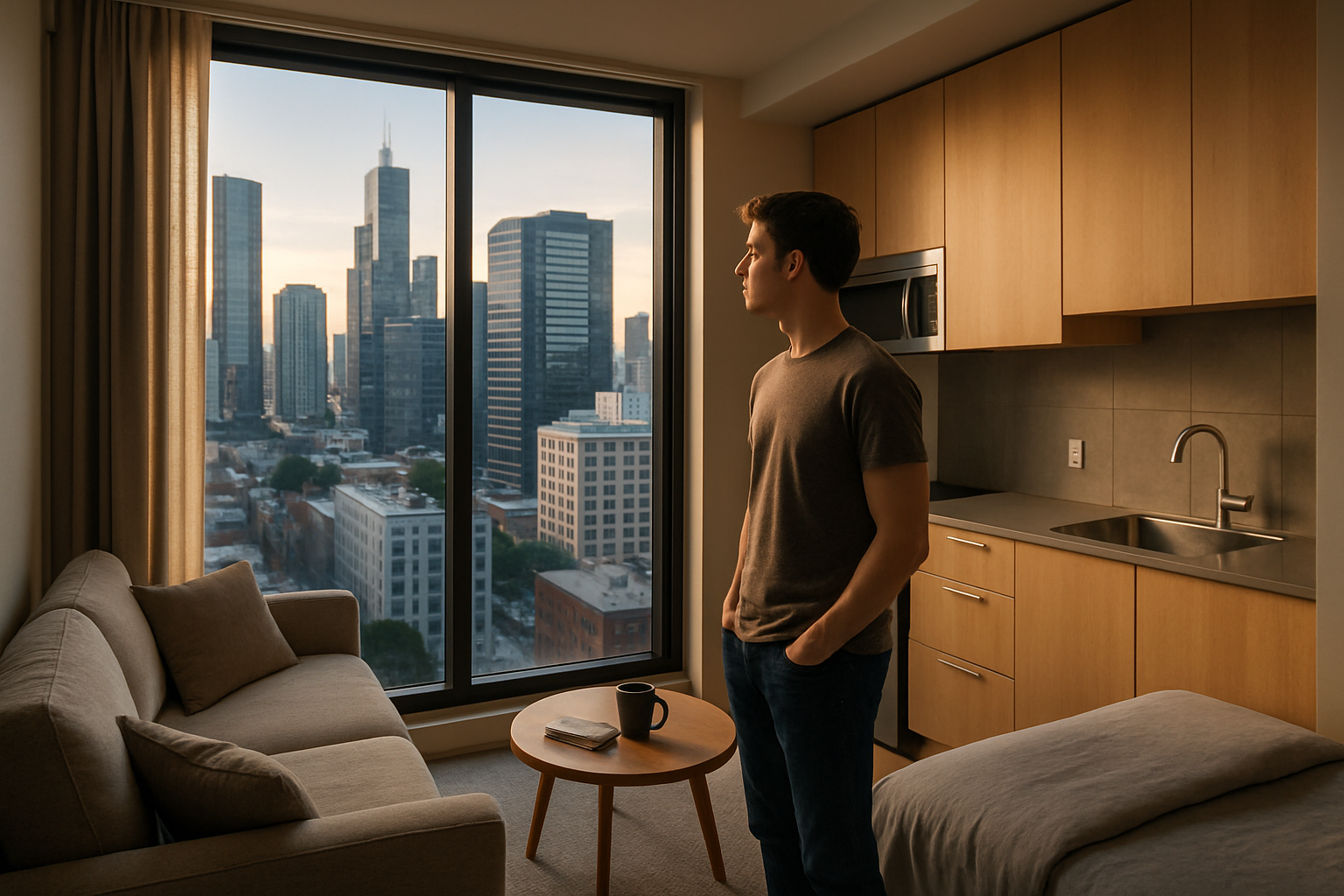The Hidden Potential of Micro-Apartments in Urban Real Estate
In the ever-evolving landscape of urban real estate, a new trend is quietly reshaping how we think about city living. Micro-apartments, compact living spaces typically under 400 square feet, are gaining traction in major metropolitan areas worldwide. This shift towards smaller, more efficient living spaces is not just a passing fad but a response to changing demographics, rising housing costs, and a growing desire for sustainable urban lifestyles. As cities grapple with housing shortages and affordability crises, micro-apartments offer a unique solution that's catching the attention of developers, investors, and urban planners alike.

Initially met with skepticism, these tiny dwellings have evolved from bare-bones efficiency units to sophisticated, well-designed spaces that prioritize functionality and comfort. The financial crisis of 2008 further accelerated this trend, as many young professionals sought affordable housing options in prime urban locations.
Market Dynamics Driving the Micro-Apartment Boom
Several factors are fueling the growing demand for micro-apartments. Millennials and Gen Z, who make up a significant portion of the urban workforce, often prioritize location and lifestyle over square footage. These demographics are more likely to delay marriage and starting families, making compact living spaces more appealing.
Additionally, the rise of the gig economy and remote work has reduced the need for large living spaces, as more people seek flexible, low-maintenance housing options. From an investment perspective, micro-apartments often yield higher returns per square foot compared to traditional units, making them attractive to both developers and property investors.
Design Innovations: Maximizing Space and Functionality
The success of micro-apartments hinges on innovative design. Architects and interior designers are pushing the boundaries of space efficiency, incorporating features like:
-
Transformable furniture (e.g., Murphy beds, fold-down desks)
-
Smart storage solutions
-
Multi-functional spaces
-
High ceilings to create a sense of openness
-
Large windows to maximize natural light
These design elements not only make micro-living more comfortable but also challenge traditional notions of what constitutes a livable space. Some developers are even incorporating shared amenities like co-working spaces, gyms, and communal kitchens to compensate for the limited in-unit square footage.
Financial Implications for Investors and Developers
From an investment standpoint, micro-apartments present an intriguing opportunity. While the initial cost per square foot may be higher due to the need for high-quality finishes and clever design elements, these units often command higher rents on a per-square-foot basis.
For example, in New York City, micro-apartments can rent for up to 20% more per square foot than traditional studios in the same neighborhood. This premium is often justified by prime locations and the inclusion of utilities and amenities in the rent.
Developers are also finding that micro-apartment projects can be more profitable. By fitting more units into a given footprint, they can potentially increase their return on investment, especially in high-demand urban areas where land is at a premium.
Regulatory Challenges and Urban Planning Considerations
Despite their potential, micro-apartments face regulatory hurdles in many cities. Minimum size requirements for residential units, originally implemented to prevent overcrowding and ensure quality of life, can inadvertently block micro-apartment developments.
However, as housing affordability concerns mount, some cities are reconsidering these regulations. San Francisco, for instance, reduced its minimum apartment size to 220 square feet in 2012 to encourage more affordable housing options.
Urban planners are also grappling with the long-term implications of widespread micro-apartment adoption. While these units can increase housing density and potentially ease affordability issues, there are concerns about their impact on neighborhood dynamics and infrastructure.
The Future of Urban Living: Micro-Apartments’ Role
As cities continue to grow and evolve, micro-apartments are likely to play an increasingly significant role in urban housing strategies. Their potential to provide affordable housing options in desirable locations aligns with the goals of many city planners and policymakers.
However, the success of micro-apartments will depend on thoughtful implementation. Balancing the need for affordable housing with concerns about livability and community impact will be crucial. Future developments may see a hybrid approach, with micro-units integrated into larger mixed-use buildings that offer a range of apartment sizes and shared amenities.
For investors and developers, staying ahead of this trend could offer significant opportunities. As micro-apartments become more mainstream, early adopters who have honed their design and operational strategies may find themselves well-positioned in an evolving urban real estate market.
In conclusion, micro-apartments represent more than just a niche housing trend. They embody a shift in how we think about urban living, challenging traditional notions of space, comfort, and community. As cities worldwide grapple with housing challenges, these compact dwellings may well be a key piece of the puzzle in creating more inclusive, sustainable, and vibrant urban environments.





